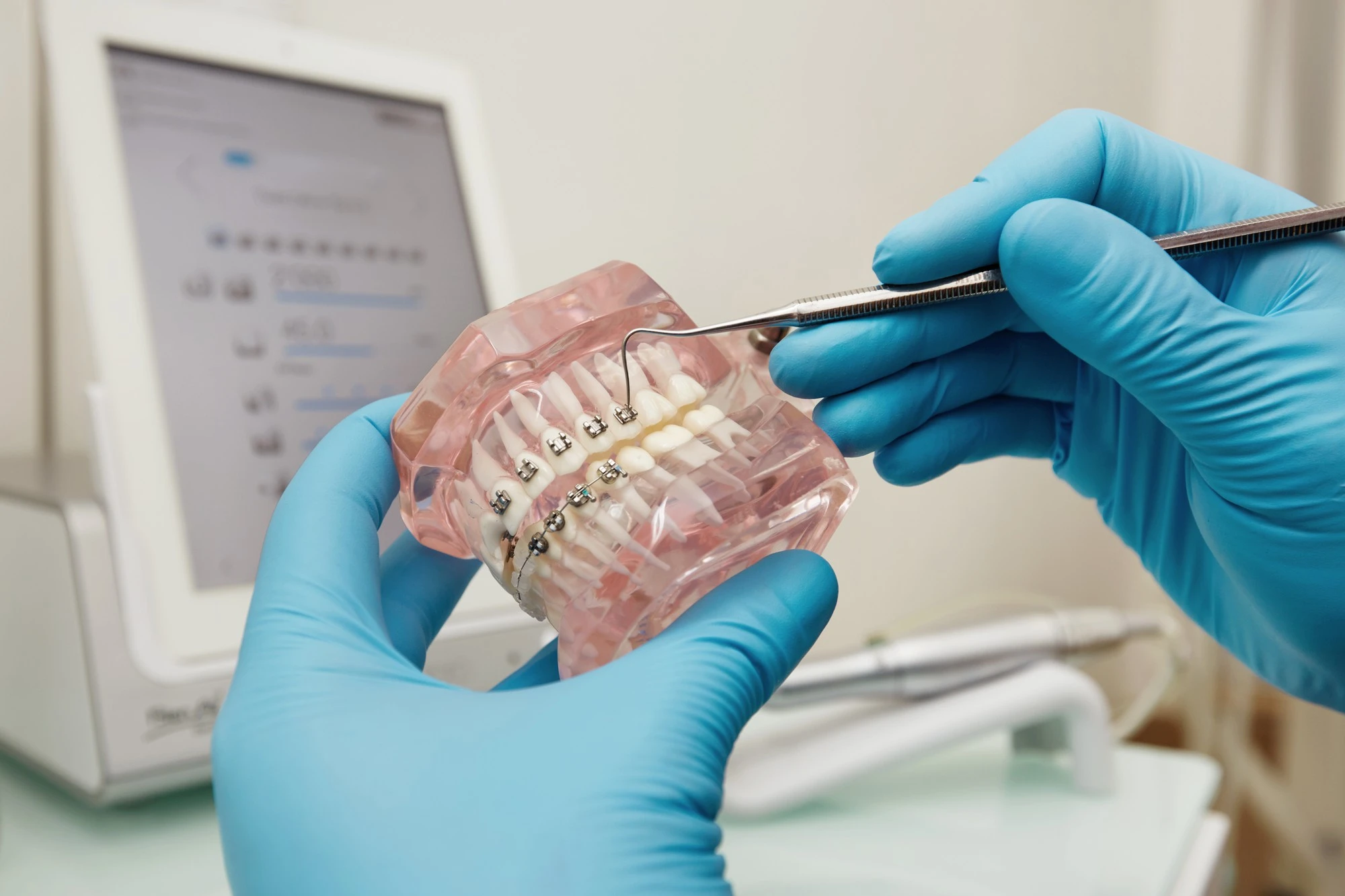When it comes to achieving a straighter, healthier smile, modern orthodontics offers a variety of options. Two of the most popular choices for correcting dental misalignments are metal braces and ceramic braces. Each type comes with its unique benefits and drawbacks, making it essential to weigh the pros and cons carefully before making a decision. This guide will walk you through everything you need to know about metal and ceramic braces to help you choose the best option for your dental needs.
Metal Braces vs Ceramic Braces at a Glance:
| Feature | Metal Braces | Ceramic Braces |
| Durability | Highly durable, suitable for complex cases | Less durable, prone to chipping or breaking |
| Cost | More affordable | More expensive |
| Aesthetic Appeal | Noticeable, metallic appearance | Discreet, tooth-coloured or clear brackets |
| Comfort | Can cause discomfort, especially initially | Smoother, generally more comfortable |
| Treatment Time | Effective for complex corrections | May require longer treatment for severe cases |
| Staining | No staining issues | Prone to staining if not properly maintained |
| Maintenance | Low maintenance | Requires diligent care to prevent staining |
What Are Metal Braces?
Metal braces are the traditional form of orthodontic treatment that has been trusted for decades. They consist of high-quality stainless steel brackets attached to the teeth and connected by metal wires, which apply consistent pressure to move teeth into their correct positions.
Benefits of Metal Braces:
- Durable: Metal braces are more durable and can withstand greater forces, making them suitable for complex cases and severe bite correction.
- Cost-Effective: They are generally less expensive than ceramic braces, making them a popular choice for budget-conscious patients.
- Effective: Highly effective at correcting a wide range of orthodontic problems, particularly those requiring significant adjustments over time.
Drawbacks of Metal Braces:
- Visibility: More noticeable than ceramic braces due to their metallic appearance. For many people, especially adults, this can be a major concern.
- Discomfort: Can cause more discomfort during the initial stages of treatment as the teeth adjust to the forces applied by the wires. Some patients also report irritation to the gums and cheeks.
What Are Ceramic Braces?
Ceramic braces are a modern alternative to traditional metal braces, designed to be less noticeable. They are made of tooth-coloured or clear brackets, which blend in with the natural colour of your teeth, providing a more discreet option for orthodontic treatment.
Benefits of Ceramic Braces:
- Aesthetic Appeal: Made of tooth-coloured or clear material, making them less visible than metal braces—ideal for image-conscious patients who are self-conscious about their appearance.
- Comfort: Generally smoother than metal brackets, offering a more comfortable experience during treatment.
- Reduced Friction: The smooth surface can reduce friction, potentially leading to faster treatment times in some cases. However, this may depend on the complexity of the orthodontic issue.
Drawbacks of Ceramic Braces:
- Durability: More prone to chipping or breaking than metal braces, which may require more frequent adjustments and replacements.
- Cost: Typically more expensive than metal braces due to the materials used and their aesthetic appeal.
- Staining: Ceramic brackets can stain if not properly maintained. Poor oral hygiene or consumption of staining foods and beverages like coffee or wine can result in discolouration over time.
- Treatment Time: May extend treatment time if unable to withstand the pressure needed to expedite correction, especially for more complicated dental issues.
Aesthetics: Appearance Matters
For many patients, aesthetics is a significant factor when choosing between metal and ceramic braces. Metal braces are more visible, while ceramic braces offer a more discreet appearance. This can be particularly appealing to adults and teenagers who prefer a less noticeable treatment. However, the appearance of ceramic braces can be compromised if they become stained by food or beverages. Proper oral hygiene is crucial to maintaining a clear look throughout the treatment period.
While the aesthetic advantage of ceramic braces is undeniable, patients must weigh this benefit against potential durability issues. For those willing to invest extra effort into maintenance, ceramic braces can offer a more appealing solution.
Durability and Effectiveness
When it comes to durability, metal braces have the upper hand. Their robust design makes them more resistant to damage and breakage. Ceramic braces, while effective, are more fragile and require careful handling.
In terms of effectiveness, metal braces are slightly superior in treating complex orthodontic cases. While ceramic braces are effective for mild to moderate misalignments, they may not be suitable for severe cases that require significant adjustments.
Moreover, metal braces are better suited for younger patients who may not always be diligent about maintaining their braces. The sturdiness of metal braces ensures that they can withstand various activities and pressure levels, making them a practical choice for children and adolescents.
Comfort Levels
Both metal and ceramic braces can cause some discomfort initially as the teeth begin to move. However, ceramic braces are often considered more comfortable due to their smoother, less abrasive material.
Some patients report that the brackets of ceramic braces feel less irritating against the gums and cheeks, contributing to a more pleasant overall experience. Additionally, the reduced friction offered by ceramic braces can make adjustments less painful, especially when compared to metal braces during the early stages of treatment.
Cost Considerations
Cost is another significant factor to consider. Metal braces tend to be more affordable, making them a popular choice for those on a budget. Ceramic braces are typically more expensive due to the materials used and their aesthetic appeal. However, the higher cost of ceramic braces is often justified by their discreet appearance and increased comfort.
Patients should also consider the possibility of additional costs associated with ceramic braces due to their fragility. Replacing damaged brackets or dealing with discolouration can increase overall treatment expenses.
Maintenance and Care
Metal braces are low maintenance and not prone to discolouration. On the other hand, ceramic braces require more diligent cleaning to prevent staining. Regular brushing, avoiding certain foods, and attending scheduled dental visits are essential for maintaining ceramic braces’ appearance and effectiveness.
Deciding What’s Right for You
Both metal and ceramic braces are effective tools for achieving a beautifully aligned smile. The choice between them ultimately comes down to your personal preferences, orthodontic requirements, and budget. Consulting with an experienced orthodontist will help you make an informed decision tailored to your needs. Contact us or visit Waldron Dental for more information and help for your dental needs.
References:
https://pmc.ncbi.nlm.nih.gov/articles/PMC6398307/













